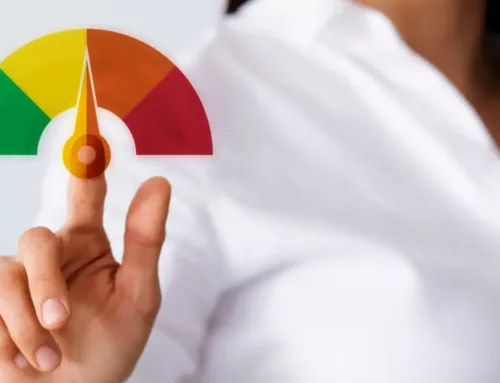Table of Contents - Quick Links
A loan from the Small Business Administration appeals to many business owners as a funding option. It often has more flexible interest rates and term lengths than other lending structures. You can qualify for it more easily and finance up to 80 to 90% of a project’s cost. One downside is that SBA financing typically has a lengthy approval process lasting about two to three months.
An SBA loan takes so long to approve compared to other financing types because the government backs the funding, and it comes with more regulations. You must also complete more paperwork since these loans typically deal with higher-risk clients, like those starting a new business.
How Fast is an SBA Loan Process?
Learn about the SBA loan timeline and explore faster financing alternatives with Porter Capital.
Which SBA Loans Can You Apply For?
The SBA offers several small business loans. Each has different approval requirements and applications. Here is each type explained:
- SBA 7(a): This loan type is the most common program offered by the SBA. You can borrow up to $5 million, making this loan an ideal choice for many real estate needs.
- SBA Express: This financing option is a type of 7(a) loan but with faster approval. You get a response to your application within 36 hours, though it will take longer to close. The maximum amount you can borrow is $500,000.
- CDC/504: Using a 504 loan from a Certified Development Company (CDC), you access funds up to $5 million to buy assets that promote business growth.
- SBA Microloans: This financing option gives you up to $50,000 to help with smaller costs like rebuilding, repairing or enhancing your business.
What Can You Use an SBA Loan For?
SBA funding helps cover various expenses related to your business. Each type has slightly different applications. For example, a microloan might work well for more minor expenses like buying supplies or furniture, while an SBA 7(a) covers higher costs like constructing a new building. General applications for SBA financing include:
- Purchasing or expanding commercial real estate
- Building commercial real estate
- Accessing short- and long-term working capital
- Financing a business acquisition
- Refinancing other debts
- Purchasing new equipment
While SBA loans work well for various business applications, small business owners may not take out money to cover personal expenses. The primary goal of the SBA program is to help businesses and create jobs, not pay off personal debts.
How to Get Approved for an SBA Loan
Generally, applying for any loan involves submitting documents to demonstrate your eligibility and awaiting a response from your lender. The process for SBA financing works much the same way and comprises four main steps.
1. Gather Documentation and Prepare the Application
Start your application by gathering the necessary documentation. To apply for small business funding, you will need the following documents:
- Borrower information form
- Personal financial statements
- Business financial statements (including profit, loss and projected finances)
- Business license or certificate
- Ownership and affiliate information
- Loan application history
- Personal income tax returns
- Business income tax returns
- Personal resumes for each principal
- Business overview and history
- Business lease information
Your application process ends when you gather and submit all necessary documents. Depending on your preparedness, this step could take up to 30 days. Lenders will also ask about your citizenship status, past criminal history and your proposed loan use.
2. Lender Reviews and Underwrites the Loan
After submitting all essential documents, you must wait about 10 to 14 days or more for the lender to review them and decide whether to approve the loan and which terms to apply to your situation. During this step, lenders will check your credit score and business plan to determine whether you have the means to repay the money you borrow.
You will likely need a credit score in the mid to high 600s and a Small Business Scoring Service number between 140 and 160 to get approved. After reviewing all submitted documents, a lender will verify the details and determine whether they should offer you the financing.
3. Lender Approves the Loan and Sends a Commitment Letter
After reviewing your documents, a lender will approve your application and send a letter of commitment. This step typically takes about 10 to 21 days. The letter of commitment you receive demonstrates the loan type you will get, the amount you borrowed, the repayment period, the interest rate, and other terms and conditions.
4. Lender Closes on the Loan
After you review and sign all necessary documents, the lender will provide final verifications and disburse the money to your account. Final confirmations include double-checking that all documents are signed and reviewing title and environmental reports. Closing typically lasts about seven to 14 days. Then, you will have the funds in your account ready for use.
When Will You Know Your Loan Has Been Approved?
After you submit the documentation to apply for SBA funding, you will need to wait about two to three weeks. After this time, the SBA will email you all the relevant details. Check a pending application’s status by contacting the Small Business Administration or accessing their online loan portal.
Your lender might have an online portal you can access to get more details about your application as well. You can also contact your loan officer to discuss a recent application.
How Long Does an SBA Loan Take to Approve?
The period from when you first collect documents to the day you receive money in your account is typically about 30 to 90 days, though the SBA loan turnaround time may depend on the funding type you want. For example, SBA Express loans promise a turnaround time of 36 hours. This number doesn’t include approval time, which could increase the estimate significantly. Funding with shorter turnaround times also has lower borrowing limits.
Other funding options like the SBA 7(a) give access to more funds but take longer, usually about 60 to 90 days. Funding like the CDC/504 loan might take up to six months.
How to Streamline the Approval Process
Much of the approval process relies on your lender reviewing your information, leaving you with little control over whether you get a loan in 30 days or six months. However, there are still a few steps you can take to streamline your approval:
- Work with an SBA-preferred lender: These lending institutions have more authority and do not need to seek direct permission from the SBA before accepting an application, which decreases your wait time.
- Apply for a different loan: The financing you apply for may depend on several factors, but if you can use a loan type like the SBA Express, your application is likely to take less time.
- Organize your application documents: The first application process step depends on how quickly you gather the necessary documentation. When you have all documents readily available, you can cut this step down to a day.
What Disqualifies You From Getting an SBA Loan?
You can also streamline your approval process by noting factors that might disqualify you from receiving financing. Save time applying for an SBA loan and seek funding elsewhere instead if any of these factors apply to you or your business:
- You have poor credit or lack usable collateral.
- You have assets you can use but aren’t willing to risk them.
- You have defaulted on a government loan.
- You have too much outstanding debt.
- You have a criminal record.
- You can’t demonstrate a financial need for funding.
- You operate in an industry to which the SBA doesn’t lend.
- You don’t meet the requirements to qualify as a small business.
SBA Loans vs. Other Funding Options
SBA loans have a lengthy and complicated approval process which may not fit every small business owner. There are other options available if you do not qualify for an SBA loan or desire a different working capital solution to fund your small business, including:
- Business line of credit: A business line of credit creates a flexible way to use funds. You spend money only as needed, and once you repay the borrowed funds, you borrow money again.
- Personal loans: As a small business owner, you can use personal financing. This lending type has fewer barriers to entry and lets you access funds for many different expenses. You also don’t need to put down collateral.
- Equipment financing: Whether you need a new copy machine or company vehicle, equipment financing can help cover the cost with less hassle than SBA funding.
- Alternative lending: You have several alternative financing options if a loan or line of credit doesn’t work for your business. For example, invoice factoring provides improved cash flow and a shorter approval process (as little as 24 hours).
Get Alternative Small Business Financing From Porter Capital
Small business financing only works for some businesses, and the long SBA loan processing time often presents a significant hurdle for companies looking to improve their current cash flow. Alternative financing options like invoice factoring can help you turn unpaid invoices into readily available funds you can use to improve your business.
At Porter Capital, we offer invoice financing to provide the funds your organization needs to thrive. We have a long record of over 30 years in service and strong financial backing to keep money flowing to your business. Contact us today to learn more about invoice factoring for your operation.




